If you’re a dog owner, there’s a good chance you’ve heard about the importance of spaying and neutering your pet. But what happens if your dog develops a lump after being spayed? Is this something you should worry about?
If you’ve just had your dog spayed, you may be wondering if it’s normal for her to have a lump after the surgery.
Many people worry about this, but in most cases, there is no need to worry. In this blog post, we will talk about what is normal and when to worry about a lump after spaying your dog.
It is normal for a dog to have a lump after being spayed, as it could be a part of the healing process, a suture reaction, or a seroma (a common surgical complication), but if the lump is hard, painful, or persists, it should be checked by a veterinarian as it can indicate an infection.
Is It Normal For a Dog To Have a Lump After Being Spayed?
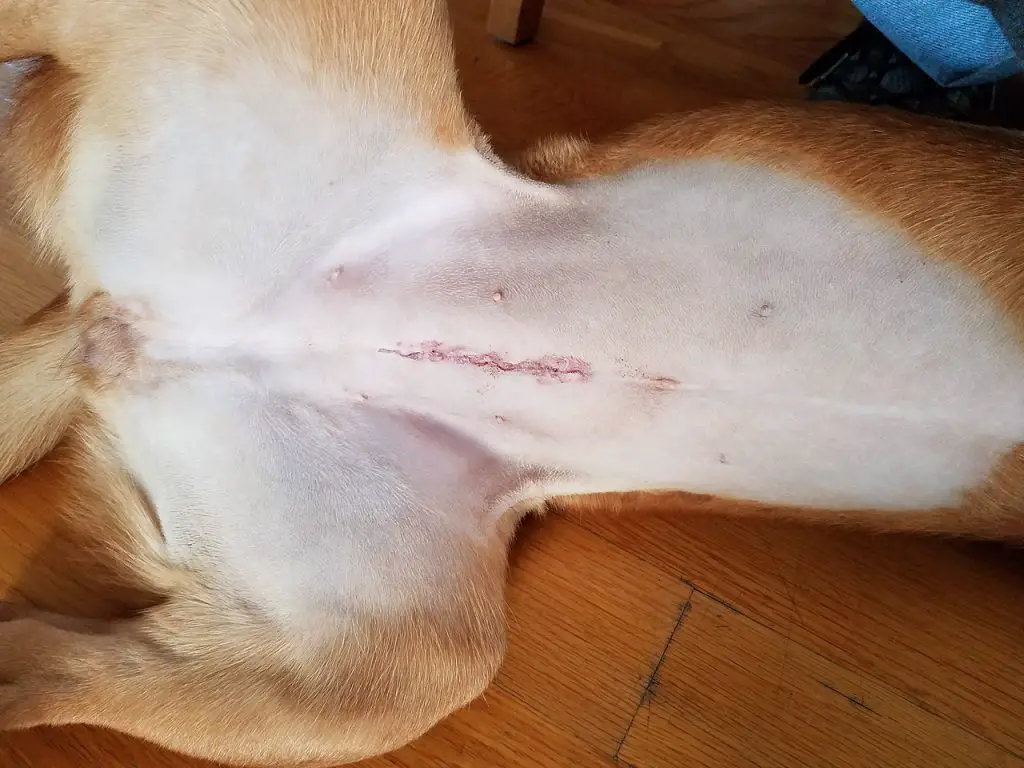
Yes, it is generally normal for a dog to have a lump at the incision site after being spayed, as it can be part of the healing process or due to a common surgical complication called a seroma, but any significant changes or concerns should always be reported to the veterinarian.
A lump on a dog after surgery is usually a seroma. A seroma is a collection of fluid that can form under the skin after surgery.
They are most commonly found where there was a lot of tissue removed or where there was an incision (surgical cut). Seromas are not usually harmful and will often go away on their own within a few weeks.
Lumps after spaying are normal and usually go away on their own. However, if the lump is large or doesn’t go away, you should take your dog to the vet for a check-up.
Lumps can be caused by different things, such as an infection or an allergic reaction to the stitches. The vet will be able to determine what is causing the lump and whether it needs to be treated. In most cases, lumps after spaying are nothing to worry about and will go away on their own.
If your dog is licking or biting at the incision, this could lead to infection. If the incision is red, warm to the touch, or oozing pus, this could also be a sign of infection. Call your veterinarian if you notice any of these signs. With proper care, most dogs heal without any complications from spay surgery.
Learn more about spay-neuter by reading this case study done by Europe PMC.
Types of Bumps That Can Appear After Spay Incision
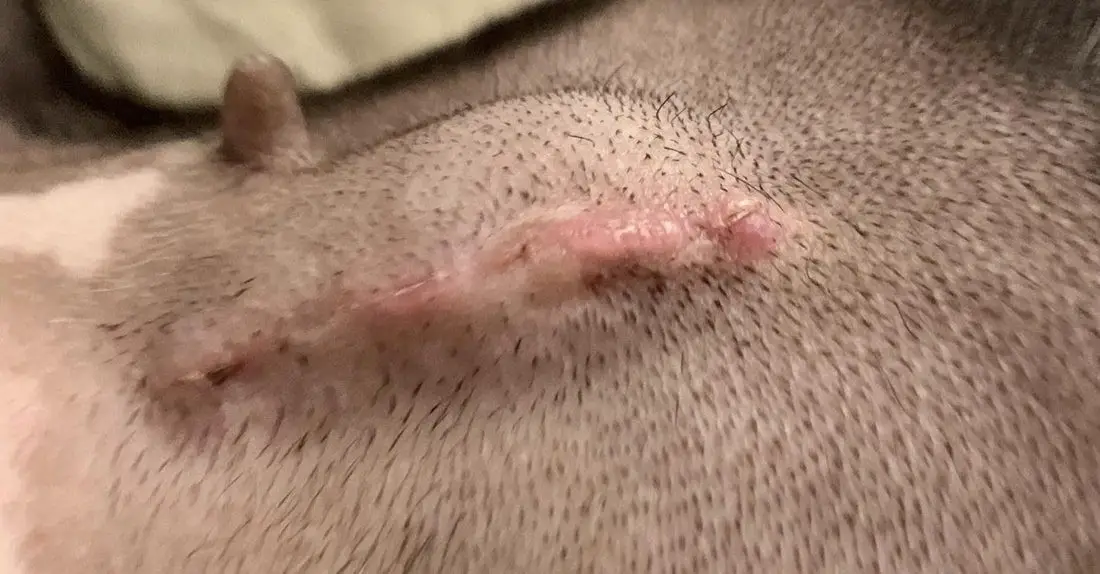
Various types of bumps can appear after a spay incision, including creased skin, tiny protrusions, elongated raised areas, liquid-filled sacs, firm lumps, wrinkled patches of skin, and inflamed, reddened bumps with discharge.
Creased Skin at the Incision’s Beginning or End
In my experience as a veterinarian, it is common for the skin around the incision site to appear creased or puckered after spaying.
This can occur due to the natural healing process of the skin and underlying tissues. As the skin heals, it may contract or tighten, leading to a creased appearance.
Normally, this is a benign condition that resolves over time as the healing process completes.
However, if you notice that the creased skin is becoming more pronounced, or if there are other signs of infection such as redness, swelling, or discharge, it’s important to seek veterinary care.
Tiny Circular Protrusion at the Incision’s Highest Point
A small circular protrusion at the top of the incision is often a suture knot.
When we perform a spaying surgery, we close the incision using sutures, and these sutures are tied off in knots.
Sometimes, these knots can protrude slightly from the skin, creating a small bump. Over time, as the body heals, these knots are typically absorbed by the body or fall off on their own.
However, if the knot becomes larger, painful, or shows signs of infection, it should be evaluated by a vet says VCA Hospitals.
Elongated Raised Area Following the Incision’s Path
An elongated raised area along the incision line is usually indicative of scar tissue formation. Scar tissue is a normal part of the body’s healing process after an injury or surgery.
It’s formed by the body to replace lost or damaged tissue. While scar tissue is not harmful in itself, excessive scar tissue formation can lead to complications such as restricted mobility or discomfort.
In most cases, the raised area will flatten out over time as the body continues to heal and remodel the scar tissue says Small Dog Vet.
A Bump Resembling a Sac, Containing Liquid
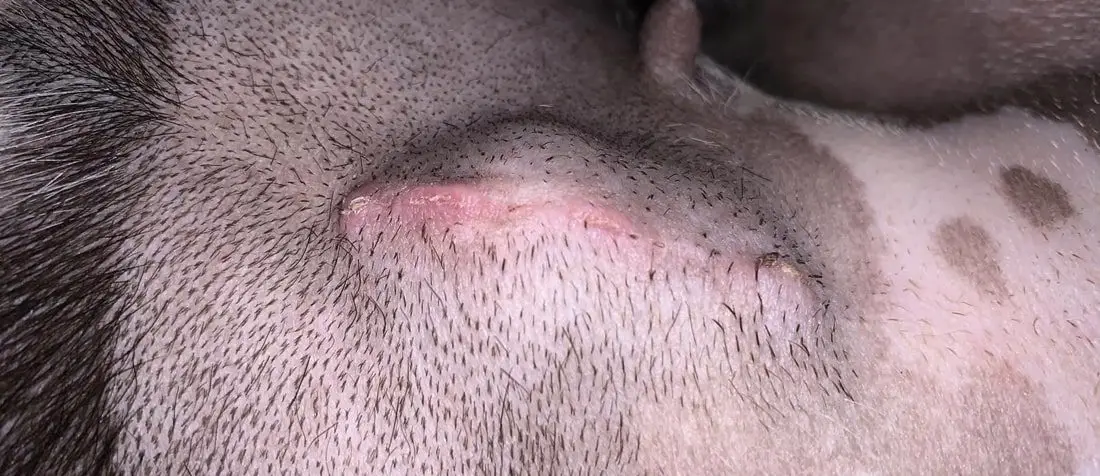
If you notice a bump that feels like a sac filled with liquid near the incision site, this could be a seroma.
A seroma is a collection of serous fluid in a pocket under the skin, and it can occur after a surgical procedure like spaying.
Seromas are typically harmless and resolve on their own as the body gradually absorbs the fluid. However, if the seroma is large, causing discomfort to your pet, or not resolving over time, it may need to be drained by a vet.
A Firm, Non-shifting Lump Near or on the Incision
A firm, non-shifting lump near or on the incision could be a hematoma, which is a collection of blood outside of the blood vessels.
Hematomas can form as a result of damage to the blood vessels during surgery.
If I encounter a suspected hematoma in practice, I may choose to drain it or prescribe medications to help the body absorb the blood.
However, if the hematoma is large, causing discomfort, or not improving, it may require further veterinary intervention as per AAHA.
Wrinkled Patch of Skin on the Incision’s Trajectory
A wrinkled patch of skin along the incision might simply be due to the healing process.
As the incision heals, the skin surrounding it may contract and tighten, leading to a wrinkled appearance.
This is usually a temporary condition that resolves as the healing process progresses. However, if the wrinkled skin persists or is associated with other signs of concern, it’s worth having it checked by a vet.
Inflamed, Reddened Bumps with Discharge
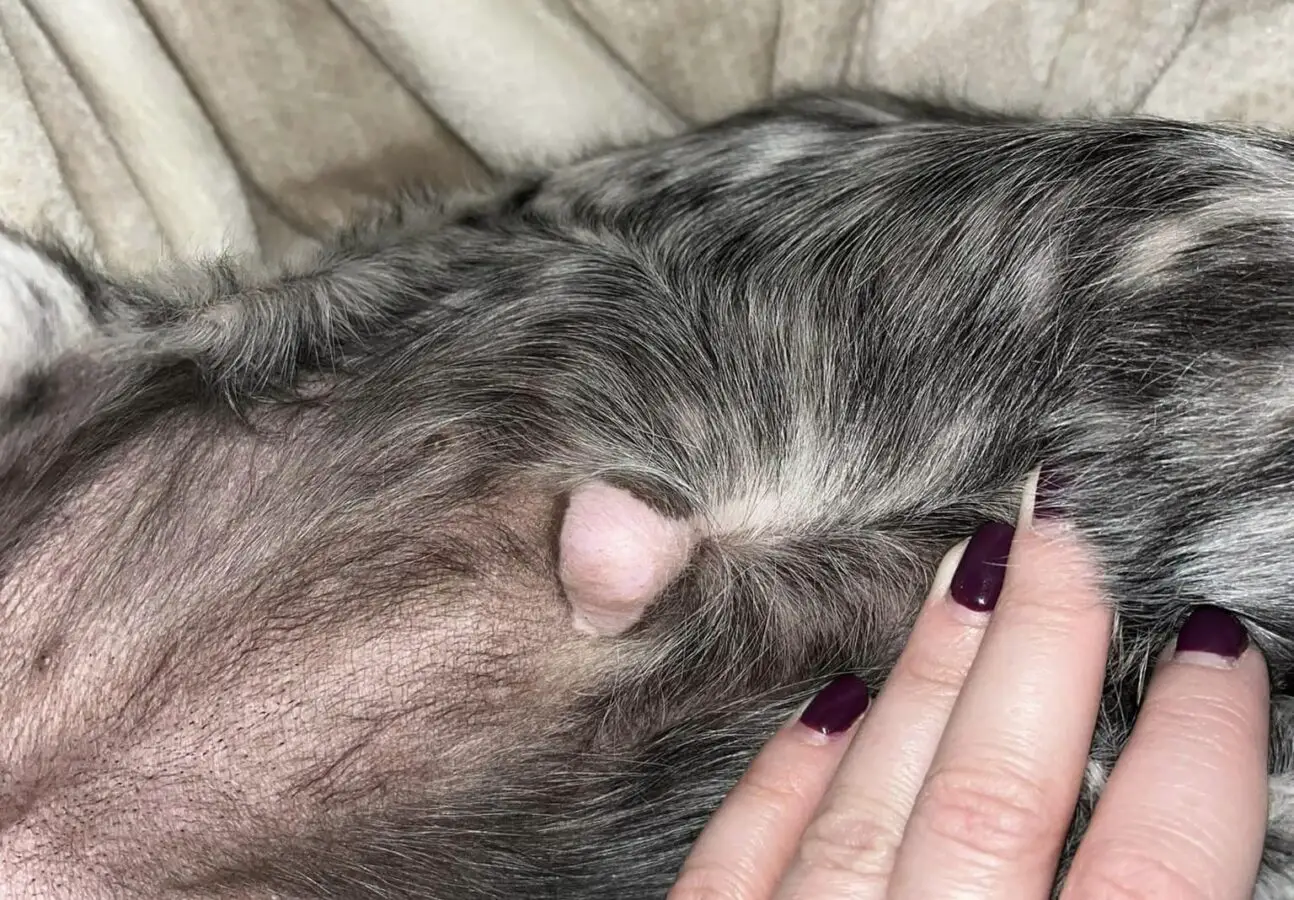
Inflamed, reddened bumps with discharge are often indicative of an infection. An infection can occur if bacteria enter the incision site.
In such cases, I would typically prescribe antibiotics to combat the infection and recommend regular cleaning of the area to prevent further bacterial contamination.
Pain relief medication may also be necessary if the infection is causing discomfort to your pet.
When Should I Be Concerned About a Spay Incision?
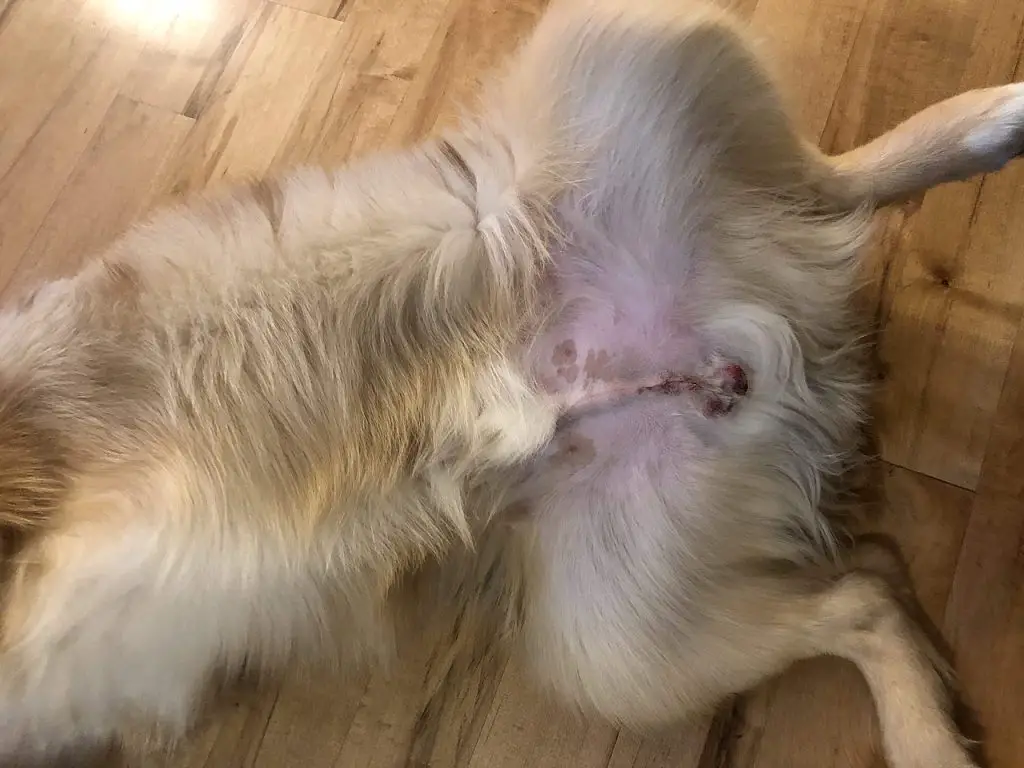
You should be concerned about a spay incision if it becomes red, swollen, or starts to leak pus or blood, or if your pet appears to be in pain, as these could indicate an infection or other complications.
A vet will likely need to see your pet and may need to do additional surgery to fix the problem. In some cases, a bad spay incision can even be life-threatening.
Usually, a lump forms after a spay incision. In most cases, these lumps go away on their own. However, there are some cases where the lumps need to be addressed by a professional.
There are a few reasons why your dog may have developed a lump after being spayed. One possibility is that the lump is an abscess. Abscesses can form when there is an infection in the body and the body tries to wall it off.
Another possibility is that the lump is a seroma, which is a collection of fluid under the skin. Seromas can occur when there is trauma to the tissue during surgery.
Lastly, the lump could be a cyst or tumor. While most tumors are benign, some can be malignant says ASPCA.
How Common Are Seromas After Spaying?
Seromas are a relatively common occurrence after spaying procedures, appearing as a swelling at the surgical site during the recuperation period.
A seroma is essentially a pocket of fluid that forms at the site of a surgical incision.
This happens when the body’s natural healing process causes inflammation in the surrounding tissues, leading to the accumulation of serous fluid.
In the context of spaying, which involves an abdominal incision, seromas can commonly occur due to factors such as the patient’s activity level post-surgery or the existence of ‘dead space’ left by the surgeon during the procedure.
In my experience as a veterinarian, I’ve observed that puppies, who are typically very active, tend to be more prone to developing seromas after being spayed.
It’s also worth noting that while seromas may look concerning, they’re generally less serious than hematomas or abscesses, which involve the accumulation of blood or pus, respectively.
Seromas usually resolve on their own with time, but it’s important to monitor the surgical site closely for any changes and to keep your vet informed.
As a preventative measure, trying to limit your pet’s activity level as much as possible during the recovery period can help reduce the risk of a seroma forming.
Remember, every animal is unique, and what is common in some may not be in others. Always consult with your vet if you have concerns about your pet’s post-operative recovery.
How Long Does It Take For a Dog’s Seroma To Go Away?
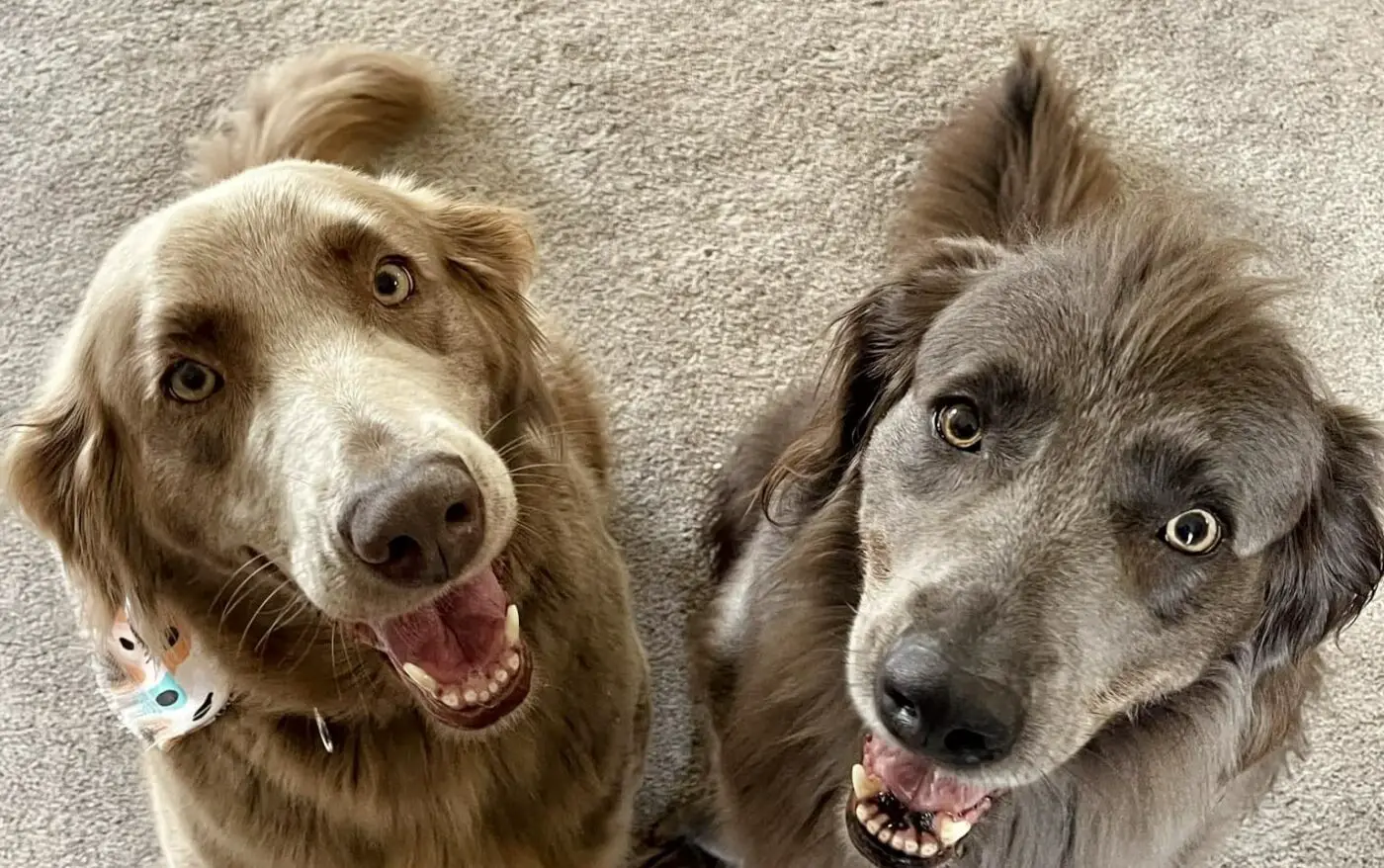
In general, most dogs will start to see improvement within a few days after the seroma has been drained. The majority of dogs will have completely healed within two weeks.
If your dog is still showing signs of discomfort or if the seroma does not seem to be improving, it is important to contact your veterinarian for further guidance. Additionally, it is important to keep the area clean and dry to prevent infection.
A dog seroma is a buildup of fluid in the tissues beneath the skin. It can occur after surgery, trauma, or infection. A seroma may feel like a lump under the skin and can be uncomfortable for your dog. Your veterinarian can drain the fluid and prescribe medication to help relieve your dog’s symptoms.
There are a few different ways that dog seromas can be treated. One common method is to drain the fluid from the area using a needle and syringe. This can be done at home by your veterinarian.
Another way to treat a dog’s seroma is to place a drain in the area. This is usually done in cases where the fluid keeps reaccumulating. The drain will need to stay in for several days or weeks until the seroma has healed.
Surgery is also an option for treating a dog’s seroma, but it is usually only considered if other methods have failed. In surgery, the surgeon will make an incision and remove the sac of fluid. This is often followed by placing stitches to close up the incision. Recovery from surgery can take a few weeks says AVMA.
Will a Seroma On a Dog Go Away On Its Own?
Yes, a seroma on a dog can usually go away on its own. In most cases, this process takes several weeks but the time frame will vary based on the size and severity of the seroma.
It’s important for pet owners to keep an eye on the seroma and monitor it for any changes in size or appearance.
If it does not improve over time, then it may be necessary to seek veterinary attention. Treatment options may include draining the seroma or other surgical intervention if needed.
Additionally, antibiotics may also be prescribed if there is evidence of infection present on the site.
What Does a Hernia Look Like After a Spay?
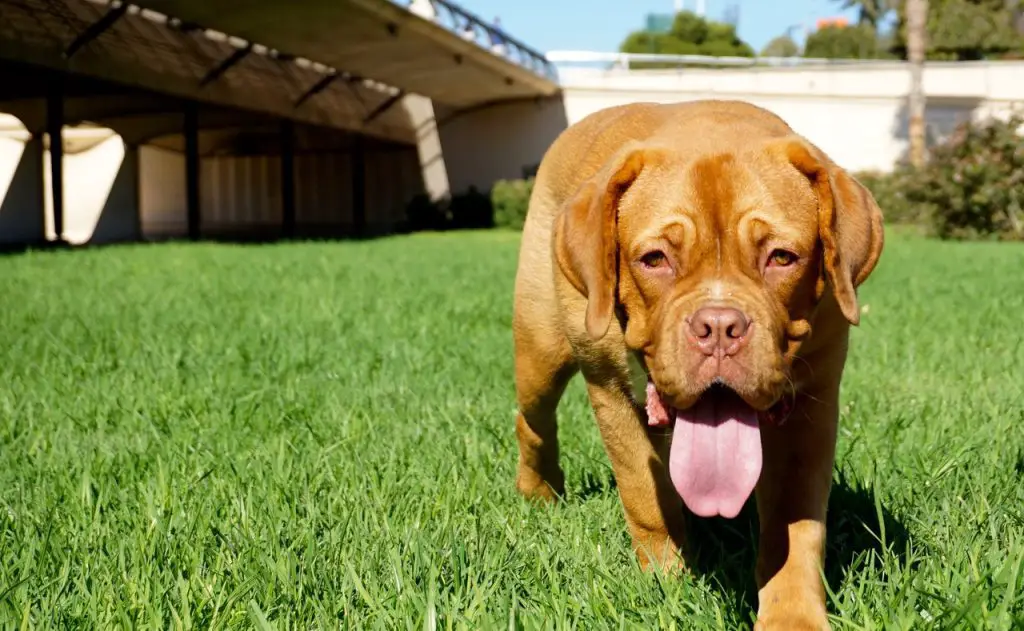
The hernia looks like a small, round bump under the skin. It is usually located near the incision site. Hernias can occur on either side of the body, but they are most common on the right side. If your dog has a hernia, she may be uncomfortable and may cry or yelp when you touch the area.
Hernias can range in size from very small to large enough that they cause a bulge in the abdomen. In some cases, hernias can be life-threatening if they become strangulated, which means that the intestines or other organs become trapped in the hernia and cannot return to their normal position. Strangulated hernias require immediate veterinary care.
A hernia is caused by an abnormal opening in the abdominal wall. This allows organs or fatty tissue to protrude through the opening. Hernias can be congenital (present at birth) or acquired (develop later in life).
Acquired hernias are more common in dogs and are often associated with trauma, such as a car accident. Obesity can also contribute to the development of hernias.
There are several types of hernias that can occur in dogs, including:
- Inguinal hernias: These occur in the groin area and are the most common type of hernia in dogs. They are also the most likely to be congenital.
- Umbilical hernias: These occur around the navel and are most common in puppies. They often close on their own as the puppy grows.
- Diaphragmatic hernias: These occur when part of the stomach or intestines protrude through an opening in the diaphragm (the muscle that separates the chest cavity from the abdomen). Diaphragmatic hernias are usually acquired and can be life-threatening.
How Do You Know If Your Dog Has a Hernia After Spay?
You can identify if your dog has a hernia after spaying by checking for symptoms like visible swelling underneath the incision, signs of discomfort, or changes in behavior such as vomiting or loss of appetite.
If the hernia is large, it may cause your dog’s stomach or intestines to protrude from the opening in their abdominal wall. Hernias can be painful, so you may notice your dog whining or crying when they are touched near the hernia site.
Hernias can be a common occurrence after spaying, and they can range in severity. If you notice your dog behaving differently or appearing to be in pain, it’s important to take her to the vet right away. Hernias can often be diagnosed with a physical examination, but your vet may also want to order X-rays or an ultrasound to confirm the diagnosis.
Treatment for hernias typically involves surgery to close the hole in the abdominal wall. In some cases, your dog may need to stay at the hospital for a few days after surgery. Recovery from hernia surgery is usually fairly quick, and most dogs are back to their normal selves within a few weeks.
Are Hernias Common After Spaying?
Yes, hernias are quite common after spaying. These can occur as a result of the abdominal incision made during the procedure, or due to weakened muscles in the abdomen.
This is why it is important for pet owners to watch out for any signs of a possible hernia following their pet’s spay surgery, including swelling or bulging in the area around the incision.
If you suspect that your pet has developed a hernia after being spayed, it is best to take them to your vet as soon as possible so they can be properly examined and treated.
Hernias should not be ignored if left untreated they could become more serious over time and may require surgical repair says Rover.
FAQs
Q: What is a seroma?
A: A seroma is a pocket of fluid that can develop under the skin after surgery. It is a normal part of the healing process and usually resolves on its own. However, if the seroma becomes large, painful or shows signs of infection, it should be checked by a veterinarian.
Q: How long does a seroma take to heal?
A: The healing time for a seroma can vary depending on the size and location. Generally, small seromas will resolve within a few weeks, while larger ones may take several months to heal completely. It is important to monitor the seroma and consult with a veterinarian if there are any concerns or if it does not improve over time.
Q: How can I prevent a seroma after my dog’s spay surgery?
A: While it is not possible to completely prevent a seroma, there are steps you can take to minimize the risk. Ensure that your dog gets plenty of rest and avoid excessive activity during the recovery period. Follow your veterinarian’s instructions for post-operative care, including keeping the incision site clean and dry. If you notice any swelling or lumps, consult with your veterinarian promptly.
Q: Can a seroma be dangerous?
A: In most cases, seromas are not dangerous and will resolve on their own. However, there can be complications if the seroma becomes infected or if it doesn’t heal properly. It is important to monitor the seroma closely and seek veterinary advice if there are any signs of infection, pain, or if it persists for an extended period of time.
Q: Should I be concerned if the lump continues to grow?
A: If the lump continues to grow in size or becomes painful, it is important to have it checked by a veterinarian. While it could still be a seroma, there are other possible causes such as an abscess or a hernia. Only a veterinary professional can accurately diagnose and determine the appropriate treatment for your dog.
Q: What are the signs of infection in a lump after spaying?
A: Signs of infection in a lump after spaying may include redness, swelling, warmth to the touch, discharge, foul odor, or your dog showing signs of discomfort or pain. If you notice any of these symptoms, it is important to consult with a veterinarian promptly for proper evaluation and treatment.
Q: Can I drain a seroma myself at home?
A: It is not recommended to attempt to drain a seroma yourself at home. Puncturing the skin without proper veterinary guidance can lead to infection or other complications. It is best to have a veterinarian examine the lump and determine if drainage or any other form of treatment is necessary.
Q: What should I do if my dog’s lump starts bleeding?
A: If the lump starts bleeding, apply gentle pressure with a clean cloth or sterile gauze. Contact your veterinarian for further guidance and to schedule an appointment to have the lump evaluated and treated as soon as possible.
Q: Can a lump after spaying be cancerous?
A: While it is unlikely, there is a possibility that a lump after spaying could be cancerous. It is always advisable to have any new lump or mass evaluated by a veterinarian to rule out the possibility of cancer or other serious conditions. The veterinarian may recommend additional tests, such as a biopsy, to determine the nature of the lump.
Conclusion and final thoughts
Is not uncommon for a dog to develop a lump or swelling around the incision site after being spayed.
This can be caused by a suture reaction or a seroma. This is a fluid-filled lump that usually resolves on its own.
However, if the lump changes in size, shape, or consistency, or is accompanied by other symptoms such as redness, discharge, or pain, it’s important to consult a veterinarian to rule out potential complications.




